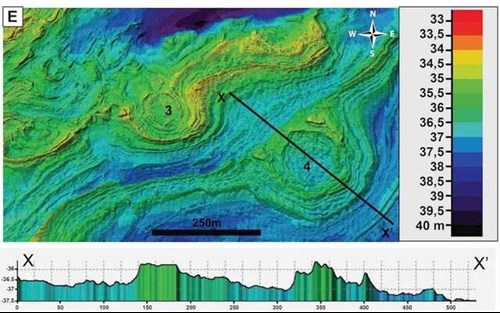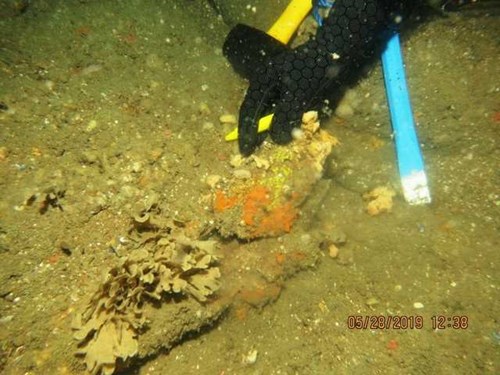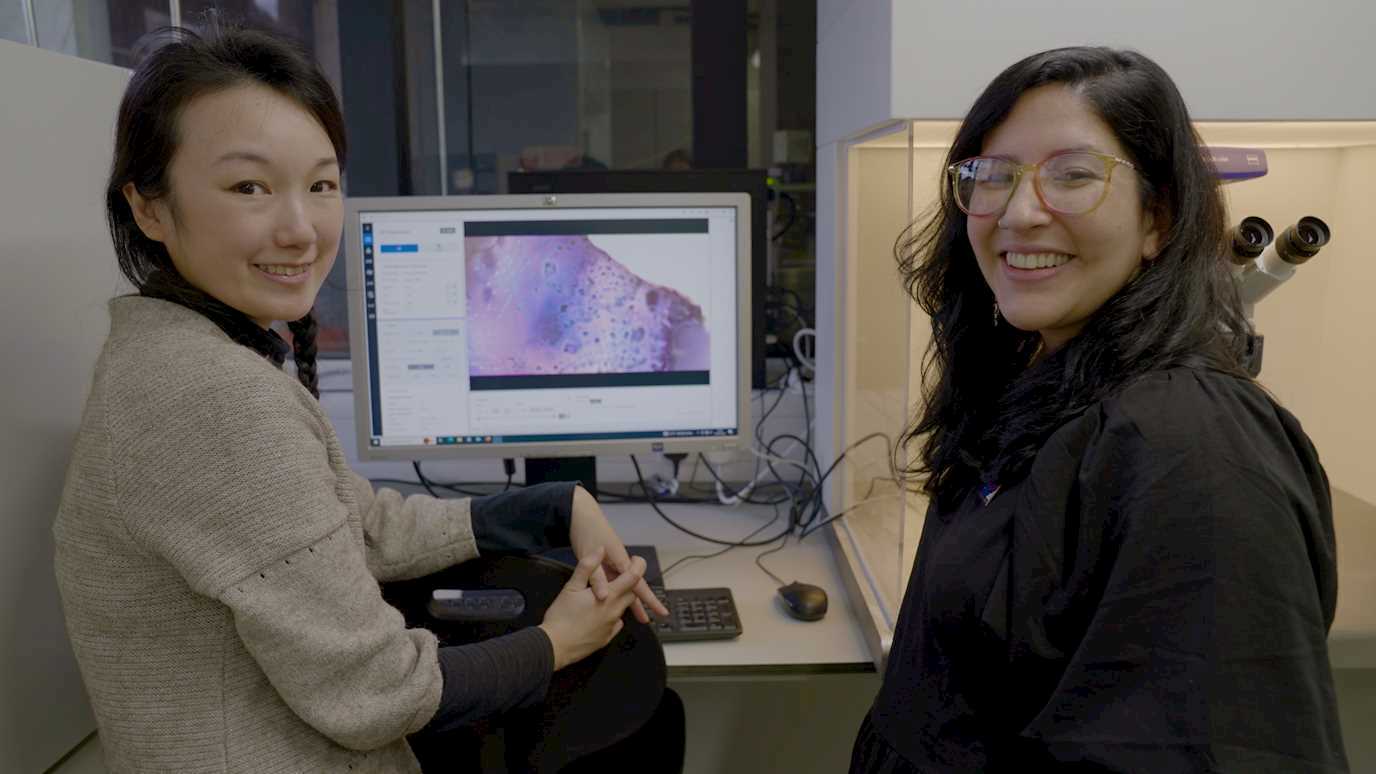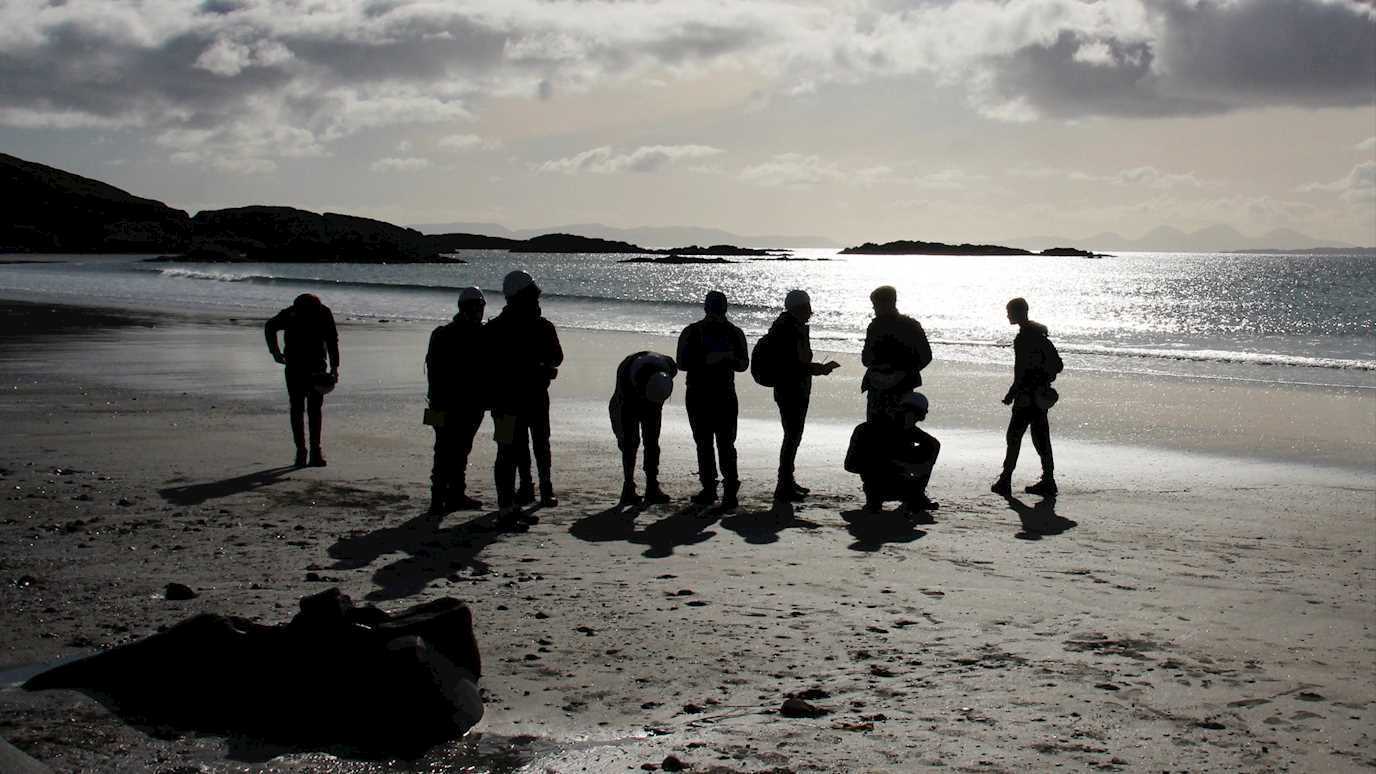Dan Bosence
We have joined forces with the Isle of Purbeck Sub-Aqua Club (IPSAC) to obtain seafloor samples from the newly discovered and enigmatic circular structures in Weymouth Bay, Dorset.

IPSAC dive boat off Purbeck coast (photo Paul Pettitt)
The “Bumps” are 50-200 m across truncated dome-shaped structures developed in Jurassic strata offshore from the Unesco World Heritage Site of the Jurassic Coast. Remote sensing using Multibeam Echo Sounding (MBES) with Jenny Collier (ICL) gives us the eroded surface morphology but not much on the rocks and leaves us with three hypotheses for their origin; carbonate mounds, salt diapirs or unusual periclinal folds.

MBES image of bumps that are truncated domes in upper Purbeck limestones and shales. Depth scale in metres and X –X” is a seafloor bathymetric profile (from Bosence et al. 2018).
To help resolve this problem we are collaborating with IPSAC who have obtained a British Sub-Aqua Jubilee Trust award to collect samples from these structures. Collecting geological samples at 30-40 m water depths in areas with strong tidal currents is not easy. Wielding a hammer and chisel underwater is not easy either and is reminiscent of early films of the moon landing with zero gravity.

Collecting in situ geological samples at 26 metres (photo Keith Coombes). Large hammer and chisel and yellow wax crayon to mark upper surface.
Following a “Dry Dive” in quarries on Portland and some shallow dives near Swanage we have more or less perfected our sample collection and await fair seas over the summer for sample collection and testing of our three hypotheses about the origin of the Bumps in Weymouth Bay.
Further reading:
BOSENCE, D.W.J., COLLIER J.S., FLECKNER S., GALLOIS A. and WATKINSON I.M. (2018) Discriminating between the origins of remotely sensed circular structures; carbonate mounds, diapirs or periclinal folds? Purbeck Limestone Group, Weymouth Bay, UK. Journal of Geological Society of London, 175, 742-756.























